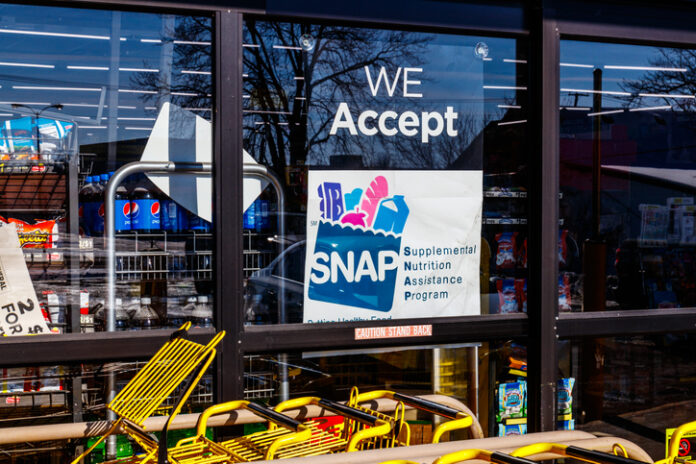Three Food Stamp reforms to improve outcomes for the truly needy—and save taxpayers billions—are needed in the farm bill. (Opinion)
During the COVID-19 pandemic, the food stamp program became (and has remained) bloated, in part because of a potentially illegal double-digit benefits increase by the Biden administration. Additionally, obvious eligibility loopholes remain unaddressed even as millionaires have enrolled.
The new Republican-controlled House of Representatives has the opportunity to initiate three specific reforms that would save taxpayers billions, protect benefits from fraud, and improve outcomes for the truly needy.
As the House freshmen settle into their new committees, one of the largest spending reauthorizations in front of them is the farm bill. Rep. Glenn “GT” Thompson, R-Pa., chairman of the House Agriculture Committee, has already held his first listening session to solicit priorities for the bill.
The most expensive part of the farm bill is actually the Supplemental Nutrition Assistance Program, or food stamps, a safety net program that provides money to help low-income individuals buy food.
Since the beginning of the pandemic, the food stamp program has grown substantially, especially as U.S. labor force participation remains below the pre-pandemic numbers—clearly showing that more folks are on the labor sidelines. The program now serves 41.1 million individuals—a sharp 4.3 million-person increase over pre-pandemic enrollment.
Outlays have substantially risen as well. In 2020, the food stamp program cost $90 billion. That number continued to rise in 2022, with the Congressional Budget Office estimating that costs will increase by 18% this year to $159 billion.
Congress can make practical changes to put the program back on the right track:
1. Revisit the Biden administration’s food stamp benefit increase.
In surprising overreach, the Biden administration unilaterally increased food stamp benefits by at least 23% in October 2021. Through an update to the Thrifty Food Plan, the U.S. Department of Agriculture, or USDA, increased food stamp outlays by between $250 billion to $300 billion over 10 years.
While the last farm bill instructed that the Thrifty Food Plan be updated by 2023 and every five years thereafter, every previous one always had been cost-neutral (food stamps always include an annual inflation update).
The Biden administration may have skirted regulations and congressional authority to increase the overall cost of the program. In fact, Senate and House Republicans requested that the Government Accountability Office investigate the legal authorities and process that the USDA undertook to arrive at such an unprecedented increase.
After the investigation, the GAO concluded, “Officials made this update without key project management and quality assurance practices in place.”
Congress should investigate this process and institute strong guidance for future updates.
2. Strengthen work requirements.
Current law allows states to waive work requirements that would otherwise apply to work-capable individuals receiving food stamps—that is, adult beneficiaries between ages 18 and 50 who are not disabled and do not have any children or other dependents in the home.
Even in a strong economy, these work expectations are fairly limited: They require individuals to work or prepare for work (including volunteer work) for 20 hours per week.
The work requirements are implemented unless the state requests a waiver for one of two instances: an unemployment rate over 10% or a lack of sufficient jobs in the state. USDA approves nearly all waivers under the “lack of sufficient jobs” option.
In 1996, when work requirements were broadly implemented for all work-capable recipients in the cash benefit welfare program, Temporary Assistance to Needy Families, the requirements had positive impacts. Employment rose, particularly among single mothers who did not graduate high school. The percentage of single mothers on TANF who worked rose from 51% in 1992 to 76% within eight years.
Moreover, teen pregnancies—and the abortion rate—fell sharply. And the most significant result: child poverty, which had been static for decades, fell sharply by almost 8% in the following decade. And the poverty rate in single-parent families dropped by nearly 60%.
Congress should follow the valuable lessons of the 1996 welfare reform. Policymakers can and should expand work requirements to all work-capable beneficiaries who are not caring for a child under the age of six.
3. Reform broad-based categorical eligibility.
Current law permits states to enroll individuals in food stamps if they receive a benefit from another program, such as TANF. However, under an administrative option called broad-based categorical eligibility, “benefit” is defined so broadly that it includes the receipt of pamphlets and 1-800 numbers.
This definition allows individuals to bypass eligibility limits, particularly the asset requirement (how much the applicant has in resources such as bank accounts or property). Adopting the categorical eligibility option has even allowed millionaires to enroll in the food stamp program.
The Trump administration proposed a rule that would have clarified what benefits count to confer eligibility to “increase program integrity and reduce fraud, waste, and abuse.” The rule was never finalized and didn’t go into effect. Congress should amend the law and close the loophole.
Conclusion
This Congress has a rare chance to transform a key safety net program. By focusing on revisiting the Biden administration’s unilateral food stamp benefits increase, strengthening work requirements, and building in stronger eligibility standards, Congress can save taxpayers billions of dollars while improving outcomes for millions of families.
Originally published by The Daily Signal. Republished with permission.
For more great content from Budget & Tax News.











